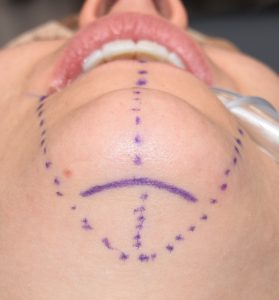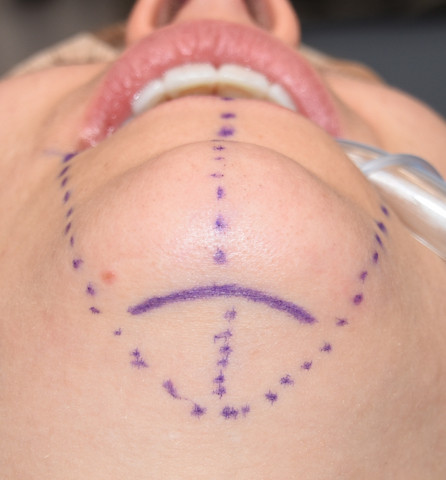Chin reduction is a challenging operation due to the overlying soft tissue chin pad. Since the chin is a projecting bony structure and the soft tissue pad wraps around it, reduction of its bony support and the subperiosteal release of the tissues to do so has implications for the aesthetic result. Like all bony reductions done anywhere on the face how well the soft tissue shrinks down around it and firmly reattaches affects the degree of improvement.
Unfortunately the chin soft tissue pad does not have a great or assured ability to shrink down in size. The key reason is the subperiosteal release which detaches the osteocutaneous ligaments. Once the bone is released the soft tissues will not quickly reattach but instead may sag before healing has occurred. This is why intraoral bony reduction of the chin by shaving/burring has a risk of postoperative sag. This may be able to be circumvented with a good superior soft tissue resuspension if the bone reduction is only modest.
For these reasons the submental approach has merit in many types of chin reductions when a significant bone removal is needed or when a 3D type reshaping is required. (horizontal, vertical and width dimensions) Because the submental approach involves a skin incision, its placement and extent is important. This is of significance particularly doing closure.
The value of a submental chin reduction is that the soft tissues can be managed. (reduced and tightened) All three layers of the submental chin tissues (skin, fat and muscle) will usually need to be reduced to some degree. With this reduction often comes the need to avoid or chase dog ears at the incisional ends. In doing so the incision will become lengthened. This may take the incision into a more visible area out of the shadow of the submental area.

One of the interesting aspects of submental chin reduction is that one of its benefits (soft tissue removal) can turn into a liability (excessive scar length) if one is not careful. Crossing the triangulation lines makes the incision visible from the sides which is wise to be avoided.
While limiting the incisional length is important it sometimes is the reason a secondary submental scar revision may be needed to work out any irregularities.
Dr. Barry Eppley
Indianapolis, Indiana



